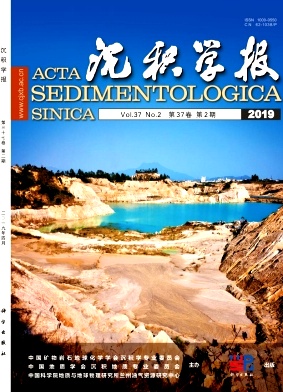Grain Size Characteristics and Paleoclimate Records of the Neogene Red Clay in Altun, Western China
doi: 10.14027/j.issn.1000-0550.2018.129
- Received Date: 2018-03-02
- Rev Recd Date: 2018-04-15
- Publish Date: 2019-04-10
-
Key words:
- Altun /
- red clay /
- grain size /
- Neogene /
- End Member Model /
- westerly
Abstract: The Loess Plateau with eolian accumulation is the most widespread and most continuous area in western China. Based on the loess-paleosol sequence and research of the underlying red clay, a series of advances have been made in determining the inland aridity, the evolution of the paleo-monsoon, and its constraints on the uplift of the plateau. The eolian deposits found in the western part of China also provide indispensable data for inland aridity research. Based on previous field investigations, this paper takes the Neogene red clay in the Altun Mountain area on the northeastern margin of Qinghai-Tibet Plateau as the research focus, and based on the magnetic stratigraphy, substitution indices of paleoclimatology, such as magnetic susceptibility, particle size, etc, are used to reconstruct the palaeoclimate evolution process of the Altun area and explore its indicative significance for the aridity of the Asian interior. In this paper, grain size analysis is carried out on the basis of the existing magnetic stratigraphic constraints and the paleo-climatic environment information for the inversion of the Altun Neogene red clay records. The sediment grain size End Member Model (EMM) was decomposed. It can be divided into three End Members:EM1 (mode particle size 5.2 μm) has a concentration size distribution in 2-6 μm, grain size distribution in the westerlies of the North Pacific Ocean, and grain size distribution of Chinese loess. EM2 (Mode Size 20 μm) shows a negative skewed asymmetric distribution, and the Mode Size is between 32-16 μm. It is the dust material, which is moved by the low-level westerly over short distances. The distribution of EM3 is a double main peak, and the particle sizes are 57 μm and 2.5 μm, representing the intensity of near-source variation of wind-stroke dynamics during the duststorm event reflecting the mixed depositional characteristics. During 10.8-10.3 Ma, 8-6 Ma, 5.2-4.3 Ma, and 3.6-2.8 Ma, the particle content of End-Member 1 gradually decreased while the granularity percent content of End-Member 2 shows a gradually increasing trend and medium particle size. The Altun red clay records show that the intensity of the inland drought has gone through four stages:10.8-10.3 Ma, 8-6 Ma, 5.2-4.3 Ma, and 3.6-2.8 Ma. Combined with previous studies of other geological records for the profile and related geological records of the adjacent areas, the onset time of inland drought may be 11 Ma. The westerly wind is dominant in this area, global cooling is the leading factor of the intensification of inland drought, and the stage uplift of the Tibei-Plateau is promoted.
| Citation: | HUANG DanQing, YANG LiRong, LI JianXing, YUE LePing, PAN Feng, XU Yong, ZHANG YuBo. Grain Size Characteristics and Paleoclimate Records of the Neogene Red Clay in Altun, Western China[J]. Acta Sedimentologica Sinica, 2019, 37(2): 309-319. doi: 10.14027/j.issn.1000-0550.2018.129 |






 DownLoad:
DownLoad: